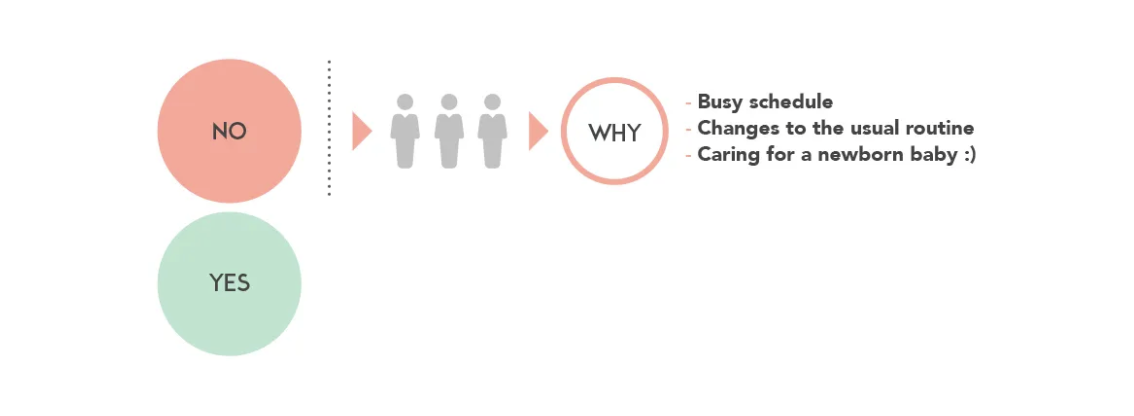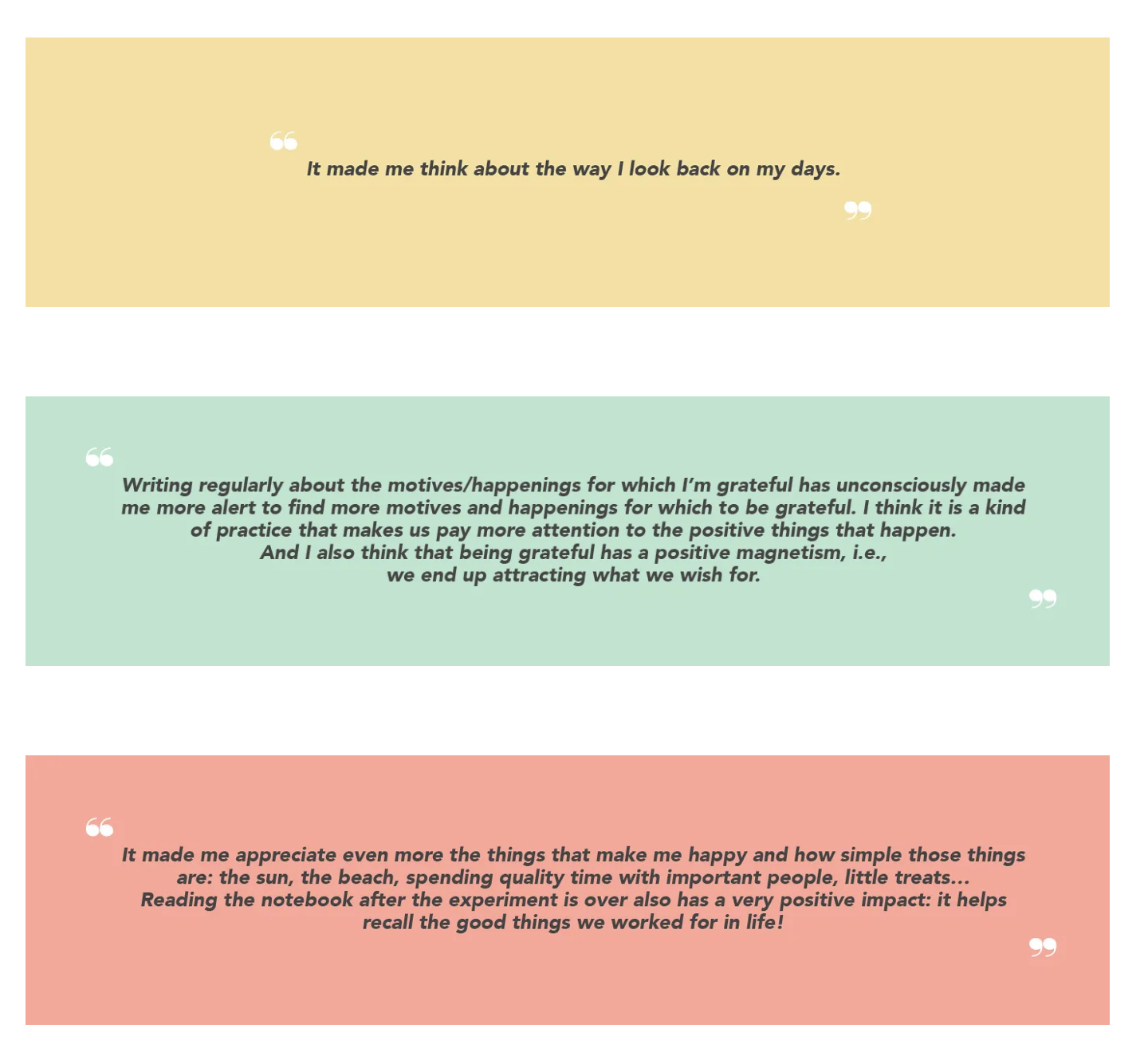My happiness experiment failed. Or did it?
A couple of months ago I invited 10 people to embark on a happiness experiment: writing down one thing they felt grateful for every day, 21 days in a row. You can read the whole story here. Participants were supposed to give me feedback after the experiment was over. Way less than half did, which, by modern standards, is a total failure. Being an old-fashioned gal, I think there’s more to read into these results. Bear with me for a few more minutes and you’ll find out why.
First things first. About the participants:
About those who gave me feedback after the experiment was over:
Now, why am I not crying in bed over my failed experiment?
First, because I found consolation in research. I dug deep into a study conducted in 2009 to investigate habit formation in the real world. That helped me keep things in perspective: researchers started with a pool of 101 potential participants and ended up with 82, who only complied with the experiment instructions on an average of 47 out of 84 days. And people were being paid to participate!
Second, because after I shared the story, other people started showing an interest in trying out the experiment. A 50-unit edition of the notebooks sold out in just 72 hours. A second batch of 50 units disappeared in about a week. As I’m writing this post, there are still people on a waiting list.
This unpredicted impact made me curious: why were those invited to participate in the experiment less enthusiastic than those who just learned about in through my post? A lot of self-doubt could be raised at this point, but instead I decided to look further into the feedback I got from participants.
Were they able to keep the ritual for 21 days in a row?
These testimonies are in line with the conclusions from the 2009 study: even though it is important to perform a behavior repeatedly to turn it into a habit, missing one day here and there does not have a definitive effect. Missing a whole week, on the other hand, may negatively impact the likelihood of it becoming a habit.
How did they feel before starting the experiment?
And how did they feel after the experiment was over?
Did they feel that the experiment had any impact?
How?
Were they willing to keep the ritual going?
Would they recommend the practice to other people?
So, what is there to learn from this failed experiment?
1. Intrinsic motivation is key
Going back to the study on habit formation, participants were given the chance to select the behaviors they wanted to turn into habits. In my experiment, participants were asked to introduce a predetermined new behavior into their daily routines. It is probably not a coincidence that, from the three participants who concluded the 21-day experiment and gave me feedback, two were already into self-development practices, and one had actually started a gratitude ritual. This new behavior mattered to them.
That being so, the next logical idea would be that the people who got the notebooks for themselves after reading my story are more likely to keep the ritual going because they made a decision to commit to the daily gratitude behavior. This raises yet a new question (oh, the wonderful rollercoaster of research): one of the participants mentioned offering the notebook to six friends — will they be able to implement and sustain the practice? (I would love to test these hypotheses by the way. If you are one of the people who got the notebooks for themselves or were offered one and are interested in contributing to this research, please drop me a line!).
2. Early support is necessary
Another conclusion from the 2009 study was that interventions designed to create new habits should provide support to make sure that individuals keep repeating the behavior consistently until it becomes automatic. In my experiment, participants weren’t given much — if any — support. So, taking into account some of the improvement suggestions from my three testers, I decided to introduce a few changes to the notebooks beautifully designed by Catarina Machado:
A progress tracker — to promote consistency
Inspiration quotes — to motivate to keep going
Reflection prompts — to raise awareness of the impact
A few tips — like writing everyday at the same time, for example
We will be launching these revamped notebooks soon. Our expectation is that these changes will help more people turn gratitude into a habit. The idea that we need to have external support to implement changes that are beneficial to our own happiness may sound counterintuitive but the truth is, anyone who has tried to perform a new behavior consistently knows that it is really difficult. The fact that researchers have been studying habit formation for so long and haven’t cracked the code yet proves it. Our goal is not to be the ones who do it (not now anyway), but just to make it a bit easier for everyone motivated to turn gratitude into a habit to get past through those initial, rocky, days.
. . .
In case you’re wondering, I noticed that in the above mentioned study 66 days was the average time for a behavior to become automatic. However, the range was from 18 to 254 days, and researchers hypothesized that more complex behaviors take longer to become habits. I decided to keep the 21-day format because testers explicitly mentioned that this was important to their experience:
“I think this 21-day edition is a good way to start because the short duration makes you believe you’re capable of doing it.”
All the graphics in this post were designed by Catarina Machado.










